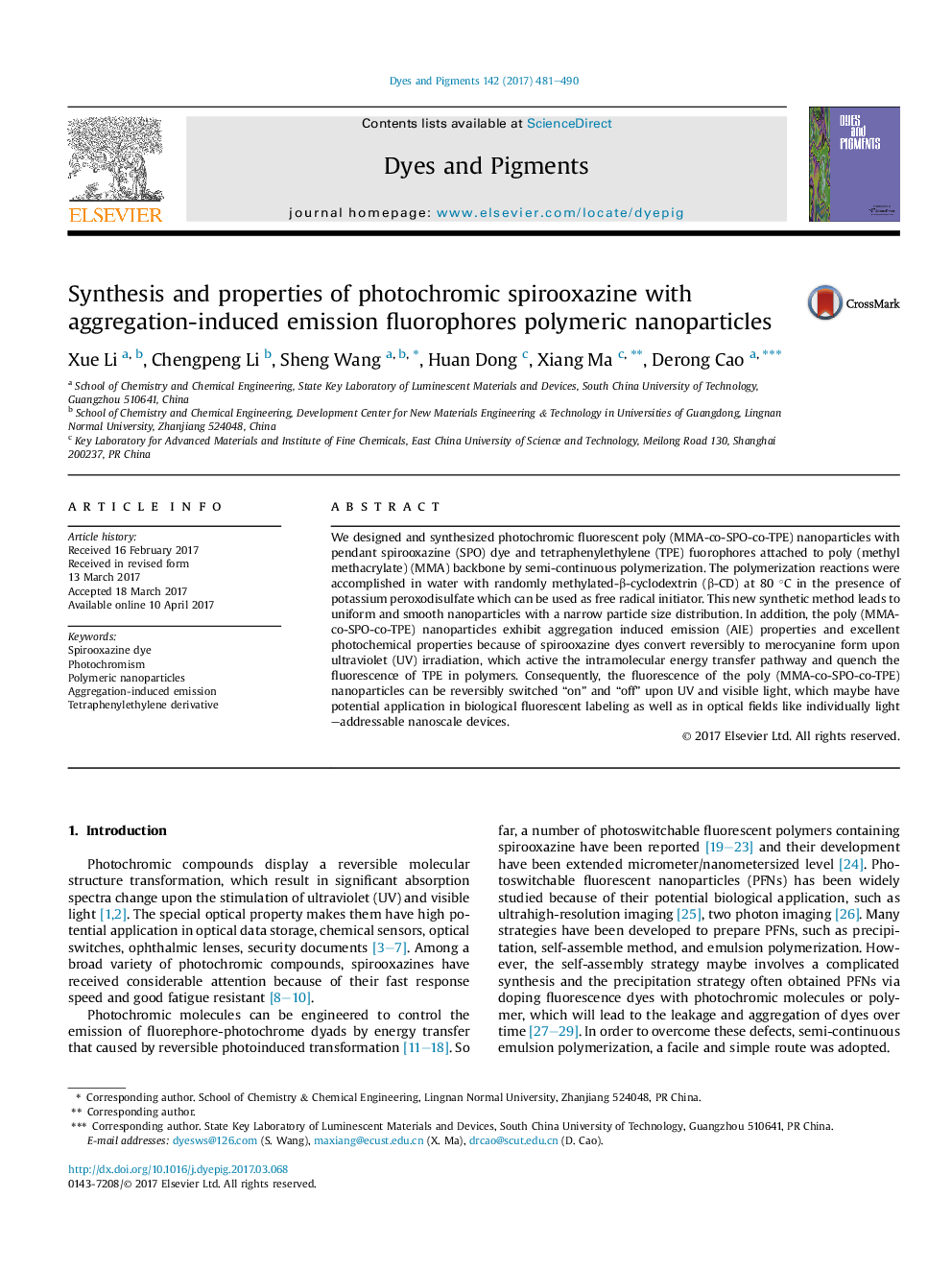| Article ID | Journal | Published Year | Pages | File Type |
|---|---|---|---|---|
| 6469455 | Dyes and Pigments | 2017 | 10 Pages |
â¢Fluorescent photochromic polymeric nanoparticles with aggregation-induced emission were synthesized via semi-continuous emulsion polymerization.â¢The obtained polymeric nanoparticles have advantages of uniform size and narrow particle size distribution.â¢Fluorescence intensities of the P2 could be reversibly changed with irradiation of UV and visible light.
We designed and synthesized photochromic fluorescent poly (MMA-co-SPO-co-TPE) nanoparticles with pendant spirooxazine (SPO) dye and tetraphenylethylene (TPE) fuorophores attached to poly (methyl methacrylate) (MMA) backbone by semi-continuous polymerization. The polymerization reactions were accomplished in water with randomly methylated-β-cyclodextrin (β-CD) at 80 °C in the presence of potassium peroxodisulfate which can be used as free radical initiator. This new synthetic method leads to uniform and smooth nanoparticles with a narrow particle size distribution. In addition, the poly (MMA-co-SPO-co-TPE) nanoparticles exhibit aggregation induced emission (AIE) properties and excellent photochemical properties because of spirooxazine dyes convert reversibly to merocyanine form upon ultraviolet (UV) irradiation, which active the intramolecular energy transfer pathway and quench the fluorescence of TPE in polymers. Consequently, the fluorescence of the poly (MMA-co-SPO-co-TPE) nanoparticles can be reversibly switched “on” and “off” upon UV and visible light, which maybe have potential application in biological fluorescent labeling as well as in optical fields like individually light-addressable nanoscale devices.
Graphical abstractDownload high-res image (388KB)Download full-size image
